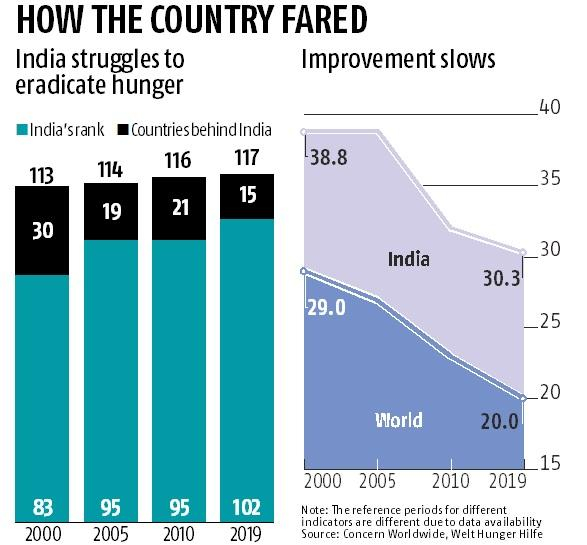Focus: GS-III Indian Economy
Why in news?
To commemorate the ‘Poshan Maah’ the DoFPD through its organisations have decided to organise activities as suggested by M/o Women and Child Development, in various parts of the country to sensitize the target groups on the merits of nutritional security.
National Nutrition Month (Rashtriya Poshan Maah)
- The entire month of September is celebrated as the Rashtriya Poshan Maah.
- The purpose of celebrating the Poshan month is to take the message of nutrition to every nook and corner of the country (especially grass root level) and to focus on complimentary food, treatment, and prevention from infections in children.
- The programme is an initiative of Women and Child Development Ministry and NITI Aayog is supported by 18 line Ministries / Departments / Government Organizations.
- It seeks to synergise all efforts by leveraging technology and intends to take nutrition awareness to the level of Jan Andolan or People’s Movement.
- The programme focuses on 8 themes – Antenatal Care, Optimal Breastfeeding (Early & Exclusive), Complementary Feeding, Anemia, Growth Monitoring, Girls-education, diet, right age of Marriage, Hygiene & Sanitation, Food Fortification.
Poshan ke Paanch sutra
This event also intends to spread awareness on Poshan ke Paanch Sutra(5 critical components of POSHAN) they are;
- First 1000 days of the child
- Anaemia
- Diarrhoea
- Hand Wash & Sanitation
- Poshtik Ahaar(Wholesome meals with diet diversity)
Poshan Abhiyaan
- Poshan Abhiyaan (National Nutrition Mission) was launched in 2018 by the Prime Minister in Jhunjhunu, Rajasthan.
- It targets to reduce level of under-nutrition and other related problems by ensuring convergence of various nutrition related schemes
- It also targets stunting, under-nutrition, anaemia (among young children, women and adolescent girls) and low birth rate.
- It will monitor and review implementation of all such schemes and utilize existing structural arrangements of line ministries wherever available.
- Its large component involves gradual scaling-up of interventions supported by on-going World Bank assisted Integrated Child Development Services (ICDS) Systems Strengthening and Nutrition Improvement Project (ISSNIP) to all districts in the country by 2022.
- Its vision is to ensure attainment of malnutrition free India by 2022.
Global Hunger Index
- The Global Hunger Index (GHI) is a tool designed to comprehensively measure and track hunger at global, regional, and national levels.
- The GHI is designed to raise awareness and understanding of the struggle against hunger, provide a way to compare levels of hunger between countries and regions, and call attention to those areas of the world where hunger levels are highest and where the need for additional efforts to eliminate hunger is greatest.
- GHI is calculated each year to assess progress and setbacks in combating hunger. It scores on a 100-point GHI Severity Scale, where 0 is the best score (no hunger) and 100 is the chronic undernutrition.
Indicators for Calculating GHI Score:
- UNDERNOURISHMENT: the share of the population that is undernourished (caloric intake is insufficient);
- CHILD WASTING: the share of children under the age of five who are wasted (low weight for their height, reflecting acute undernutrition);
- CHILD STUNTING: the share of children under the age of five who are stunted (low height for their age, reflecting chronic undernutrition); and
- CHILD MORTALITY: the mortality rate of children under the age of five (reflection of the fatal mix of inadequate nutrition and unhealthy environments).

- In the recently released Global Hunger Index (GHI) Report-2019, India was ranked at 102nd position out of 117 countries.
- The report is an annual publication that is jointly prepared by the Concern Worldwide (an Irish agency) and the Welt Hunger Hilfe (a German organization).



